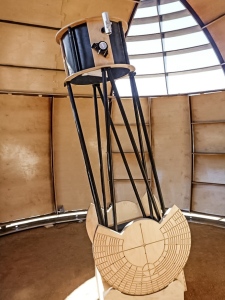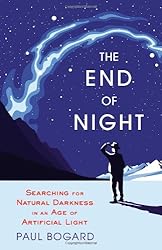Unlike most observatories, Black Rock Observatory has no fixed location. It’s not permanently fixed on top of a hill or on an island. Instead, it is about to make its way from Los Angeles to the Nevada desert, where it will be installed for the Burning Man festival that starts at the end of this month. In September, it will all be packed up again and removed.
Black Rock City, the location of Burning Man, is a place that only exists for one week every year. It runs entirely on a sharing economy, and it’s out of range of mobile phone providers and internet. For the entire week, the participants of Burning Man are part of a community with no ties to the outside world.
 It’s the perfect place to look up at the stars together, so last year a group of scientists, artists and engineers created the first Black Rock Observatory. The domes, designed by Gregg Fleishman, are relatively easy to transport and the creators have since visited several other events with the mobile observatory, bringing astronomy to an even wider audience. Besides looking through the telescopes, visitors can hold a meteor, and learn more about space.
It’s the perfect place to look up at the stars together, so last year a group of scientists, artists and engineers created the first Black Rock Observatory. The domes, designed by Gregg Fleishman, are relatively easy to transport and the creators have since visited several other events with the mobile observatory, bringing astronomy to an even wider audience. Besides looking through the telescopes, visitors can hold a meteor, and learn more about space.
This year Black Rock Observatory will be back at Burning Man with a second telescope, to give even more people a chance to visit the impromptu observatory.
 The theme of Burning Man this year is “Carnival of Mirrors”, which is a very fitting theme! As the creators, the “Desert Wizards of Mars”, said on their (successfully funded) Kickstarter page: “There will be a lot of mirrors at Burning Man this year, but our very special mirror will show you wonders that are light years away in perfect focus from the comfort of our Macro Dome. (…) Our telescope’s precision, hand-crafted, parabolic mirror cradles light to allow you to see through space and time. It has a silicon dioxide coating and will transmit millions of travel-wary photons into your pupils every minute.”
The theme of Burning Man this year is “Carnival of Mirrors”, which is a very fitting theme! As the creators, the “Desert Wizards of Mars”, said on their (successfully funded) Kickstarter page: “There will be a lot of mirrors at Burning Man this year, but our very special mirror will show you wonders that are light years away in perfect focus from the comfort of our Macro Dome. (…) Our telescope’s precision, hand-crafted, parabolic mirror cradles light to allow you to see through space and time. It has a silicon dioxide coating and will transmit millions of travel-wary photons into your pupils every minute.”
All images from the Black Rock Observatory website. Many more on there!





